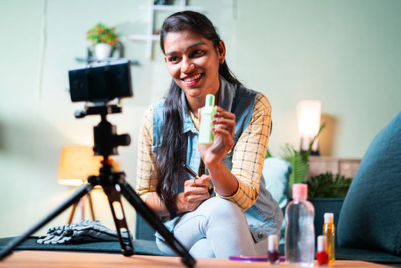
When the initial shock of the pandemic hit last year, brands scrambled to move the entirety of their strategy online, and had to so within weeks. Luckily for Shiseido, its transformation programme had already been in place for about four years. But that doesn't mean the brand didn't face challenges when borders shut and the world retreated into homebound orders.
The brand is largely retail-driven and dependent on department store sales, so the dramatic reduction in footfall forced Leroy Chua, the company's regional director of digital marketing for APAC (except Hong Kong, China and Japan), to more aggressively channel ecommerce as a force.
"While it's easy to get a shop-in-shop up and and running, there are still a lot of operational challenges that we need to be prepared for," he says. "Generally, during the pandemic, it's definitely been a challenge to shift the focus from retail to setting up for success in ecommerce."
Shiseido, which works with global media agency of record Dentsu, had to drastically move away from out-of-home and traditional media and into digital to target consumers more precisely, alongside crafting cost-efficient methods to procure media.

A major challenge Chua faced in 2020 was managing staff to adapt to the pace of transformation. "Driving transformation to build an infrastructure is just a matter of time and technical skill sets, and to some extent, investments," he says. "But to shift and enable the workforce to adapt to transformation—that's the most challenging part."
Shiseido's digital team has been present for about five years, but 2020 required this team to rapidly adjust to changes. One way the brand managed this was to arrange internal learning and development programmes to help the marketing teams understand digital landscapes, key digital pillars such as CRM, ecommerce, SEO and so on.
"We do also look at more technical programmes that are specific to key functions for colleagues who are closer to the consumers," Chua says. "It's very much a top-down approach for us, because having a group of leaders with a strong digital mindset is critical in accelerating the shift."
Given that Shiseido was greatly missing out on the element of touch and feel—a key factor in driving purchasing behaviour in cosmetics and skincare—Chua and his team leveraged AR for consumers to try on different products. From a marketing perspective, the team also created Instagram filters to engage consumers for product launches. And as a bonus, in-store beauty consultants and makeup artists were used to interact with online customers.
"From an analytics point of view, we do see quite a healthy number of customers who are playing with the AR toolbar, but I think it's still an early stage and customers are still trying to get used to this technology. But of course, ultimately, the physical touch is still important," says Chua.
One area where Chua looks to China for inspiration is livestream retail. He says: "Livestream has become a mainstay during mega ecommerce campaigns such as 11/11 or 12/12, or even on social media where we provide makeup or skincare tutorials. It's definitely a part of the overall strategy these days, and not just for us, but for the entire beauty industry."
He adds that brand beauty consultants and makeup artists are a great asset and resource to bridge the gap between the brand and consumer in these times, as they've stepped up to hold a more front-facing role on social media. Chua says the brand might gravitate towards beauty consultants for short pieces of content but stick to big-name influencers for larger events.
In 2021, Chua says that he will remain cautious despite some markets entering a recovery stage. "The main goal this year is to definitely look at how do we increase our maturity in the ecommerce space. And not just limiting to ecommerce, but having different avenues to drive sales," he says.
"Pre-Covid, people were looking at digital transformation as a step-by-step process. But the ability to change with speed during Covid has been interesting to observe and a key lesson from 2020."
Leroy Chua is a jury member for the 2021 Tangrams Strategy and Effectiveness Awards.





.jpg&h=334&w=500&q=100&v=20250320&c=1)
.jpg&h=334&w=500&q=100&v=20250320&c=1)



.jpg&h=334&w=500&q=100&v=20250320&c=1)
.png&h=334&w=500&q=100&v=20250320&c=1)



.jpg&h=268&w=401&q=100&v=20250320&c=1)



